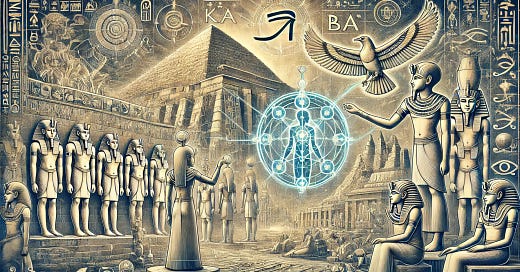Ancient Egyptian Traditions: The Mysteries of Ka and Ba
Dr. Elara Magnus’s exploration into the history of the bioelectric field begins in the sands of ancient Egypt, a civilization renowned for its profound and intricate understanding of life and the afterlife. The Egyptians’ knowledge of vital forces is encapsulated in the dual concepts of "Ka" and "Ba," central elements of their metaphysical framework. Through her meticulous research, Dr. Magnus uncovers the sophisticated awareness of bioelectric phenomena embedded within these ancient beliefs.
The Concept of Ka
In ancient Egyptian belief, the "Ka" represents the vital life force, an essential element that sustains the physical body. The Ka was not merely an abstract spiritual concept but was considered a tangible force that could be depicted in art and text. Egyptian hieroglyphs and temple inscriptions often illustrate the Ka as a double of the person, emphasizing its role as a life-sustaining energy.
Dr. Magnus finds that the Egyptia…
Keep reading with a 7-day free trial
Subscribe to Who, what, where am I? to keep reading this post and get 7 days of free access to the full post archives.




